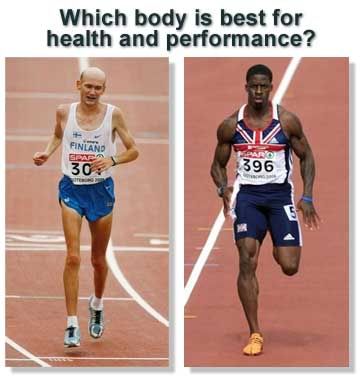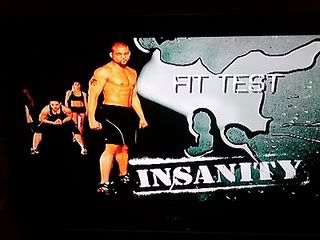Get Ripped. Get Walking.by Tim Henriques – 8/29/11
High Intensity Interval Training (HIIT) has become a conditioning staple. But what about another simple but hugely effective fat-stripping activity, namely steady-state walking?
Fact is, for the typical person that's muscular, lifts weights regularly, and looking to get a bit more cut, walking can be the perfect compliment to a rigorous weight lifting routine.
Pros of Walking
Doesn't add training stress. Unlike interval or HIIT, walking adds very little training stress to the body. But combine more intense cardio with several days of weight lifting each week and the body can quickly become over-trained. Walking, on the other hand, is restorative; you feel better after you finish a walk, not worse, and the effects are immediate.
Hard to overtrain. Because it doesn't accumulate much stress, you can walk a ton. Shin splints might be the biggest worry, but as long as you watch the incline, don't go crazy with the volume, and wear decent shoes, you should be fine.
Burns a lot of fat. Walking is a low intensity exercise, which means it burns a higher percentage of fat. True, walking for 10 minutes doesn't burn much fat, but walk briskly at an incline for 4-8 hours a week and you'll burn a significant amount of fat.
Burns almost no muscle. This is probably the biggest aesthetic benefit to the muscle building crowd. High intensity exercise, particularly cardio, uses glucose for fuel. Normally that isn't a concern as the body will break down its glycogen storage (stored carbs) for glucose.
However, if on a diet and lifting weights, glycogen stores are depleted. If you add regular intense cardio on top of this, the body will release cortisol to help convert amino acids into glucose to be used as fuel. Those amino acids can come from your hard-earned muscle tissue.
Clearly, this is a problem for a muscular individual as whatever form of energy storage you have, you burn more of that particular energy store. Most Americans have considerable bodyfat, and the body is quick to burn that off once they get moving. But a muscular and moderately lean individual will have more muscle than fat. The body will see the muscle as "excess" and will preferentially burn that muscle to meet the caloric demand of the exercise.
Helps recover from resistance training. Walking promotes blood flow, which has been shown to be very important in helping recovery from injuries. Some feel that walking also has a small spinal flossing effect that helps the nerves align optimally and thus conduct their electrical impulses in an ideal way. Ever hear someone say that a walk helps their stiff and sore muscles feel better? Now you know why.
Doesn't cause muscle fiber conversion. Walking stimulates the type I muscle fibers and motor units in the body, not the type II's. HIIT training can call on the type II's, but it tends to convert them to a more medium power, better aerobic fiber (type IIa) instead of a stronger, larger, more powerful fiber (type IIb or IIx). A 30-second interval might seem short for cardio, but it's long for someone focused on strength and power and the body will adapt accordingly.
Builds aerobic fitness. Brisk walking won't get you ready for the Boston Marathon but it does build up the VO2 Max enough to significantly assist with weight training recovery. Walking fast (4.0 mph +) at a high incline for a long duration (without holding onto the handles) isn't as easy as it seems and it can be a great compliment to the fitness developed through intense weight training. Regular fast walking can often take a more muscular male's VO2 Max to the 50+ range, which is usually ideal for them to complete challenging weight training workouts.
Stress relief. Walking can be a great way to have some quiet time, collect your thoughts, ponder your troubles (or escape them), talk with your spouse/kids/friends, or just catch up on those "Game of Thrones" episodes you missed. Truth is, once you complete the walk, you usually feel better and life looks better because of it.
Functional. My favorite word – functional has many definitions, but one is something that mimics and/or improves activities of daily living. If you go with that definition I'd argue that not only is walking functional, it's the single most functional activity a person can perform as the need to walk is crucial for human survival.
Builds work capacity. A fit person should be able to exercise at a moderate pace for a long time. Walking helps build this ability. The knock on most gym rats is that they train their phosphagen (short duration, high intensity) energy system well but they're one-shot wonders. In other words, if they have to work continuously for any length of time, they can't handle it. Walking takes care of that.
Low impact. Walking is low impact, so even if you have sensitive knees or a bad back, walking shouldn't affect it. It might even help improve that condition.
Better for strength athletes than running. Running or jogging has many benefits but strength athletes are better off avoiding it. Many lifters most notice their squat goes down, bodyweight goes down, and power goes down when they jog regularly. The heavier you are, the harder running is on your body. Note that I'm talking about jogging or sprints.
Best exercise to perform fasted. The theory behind fasted cardio is that if the body is low in carbs, it will turn to fat for energy. I agree with this premise and walking is the perfect form of exercise for it. Where everybody seems to screw up is by trying to perform HIIT cardio while fasted, which is a) brutal, because you don't have the energy and b) not smart, because you'll burn a lot of muscle (assuming you have a decent amount of muscle to begin with).
Great for all ages. Walking is great for every body. It's great for the old person trying to stay healthy and independent, it's great for kids who don't get enough exercise, and it is great for the meathead to build more long lasting stamina, burn off some fat, and just to be healthier.
Everyone knows how to walk. Walking is tough to screw up and the learning curve of walking on a treadmill is super short. The biggest mistake made when walking on the treadmill is holding onto the handles, particularly if the treadmill is at an incline. If you hold onto the handles and lean back you effectively eliminate the incline, as now your body is essentially perpendicular to the treadmill – which is what happens when you walk on flat ground.
It works. What did you see Ronnie Coleman do in the morning and the evening in his videos? He walks at an incline. He's not the only one. Trust me, if you perform this regularly, it works.
Walking is pretty awesome but there are a few negatives. Here's a quick list:
Cons of Walking
Walking doesn't build muscle. Don't expect walking to build any real muscle, that's what your weight training is for.
Walking doesn't make one a good runner. If you want to be a good runner, you're going to have to run regularly. If distance running doesn't come naturally to you, you're going to have to practice it regularly to become proficient. You can be a good walker and a crappy jogger; the biomechanics and the adaptations necessary for the two are quite different and the principle of specificity holds true. Be aware that long distance running and high levels of strength and muscle mass rarely go together.
Walking is time consuming. This sucks for busy people. To burn fat I'd suggest 3 hours of walking a week at a minimum; double that number is ideal. This is where we males can take a cue from our female counterparts and multitask. You're likely unable to read while walking at the pace I suggest, but watching TV or chatting or listening to music/books/lectures is a great way to pass the time.
I'm willing to bet that the vast majority of people reading this spend more than 3-6 hours a week watching TV. On a treadmill you could still watch that amount of TV and get lean at the same time.
When to Walk
Timing isn't super crucial when it comes to walking. If you just want to be fitter and healthier then walk whenever you can. The total duration doesn't even have to be continuous. If you want to burn fat, the best time to walk is in the morning in a fasted state as explained above.
The second best time to walk is right after a tough weight-training workout (the workout will have burned off a fair amount of glycogen, leaving your body ready to tap into fat), and the third best time is basically any time you can.
What to Do
The goal is to perform a brisk walk, often coupled with an incline, for a reasonable duration. The incline is a great way to increase calorie burning – a good goal is to find a level that allows you to burn 8-10 cals/min. You're still walking, so any muscle catabolism will be minimal.
You should be able to complete the exercise in full without stopping. If you can't, you're likely going too hard. The duration needed to promote the cardiovascular benefits and burn significant calories is usually 30 minutes or more. Certainly walking one mile (15 minutes) is much better than nothing, but it's walking 3 or 4 or 5 miles that will really start burning some fat, especially if performed regularly.
Listed below are three walking programs, but first, a few points:
• Most can hopefully complete the beginner program relatively easily.
• The intermediate program is likely the best program for the majority of readers to start out with.
• The advanced program is a good program to work up to, particularly if you're under 200 lbs.
• It's much better to start off with a program that's a little easy and let it progress than to start off with a program that's too hard. One shouldn't come close to failing on any of these workouts, particularly for the first month. If you do then you started at least one level too high.
• Don't start in the middle of a program. Start at the beginning of it, even if you think it's too easy. If you can't complete the week 1 beginner walking program then you have to look in the mirror, declare yourself out of shape, and then get your butt in gear!
• This program comes with a suggested frequency of four times a week. If you walk more frequently than that, just repeat one of the days of that week – whichever day you want. Note that each day there's often minor changes in the speed, incline, or time, so pay attention and try to follow the program as written. Little changes will add up significantly over time.
• Don't hold onto the treadmill for any length of time.
• Warm-ups aren't generally necessary, although if you need one feel free to use it. Cool downs are a good idea – cool down for 3-5 minutes at whatever speed and incline you prefer.
• This program was set up for a treadmill so I could give precise speed and incline recommendations without having to worry about the weather. Walking outside is great; you get fresh air and sunshine and you see the birds and flowers and all that crap. The big negative is no regular incline, especially if where you live is relatively flat. You can compensate for this by walking with a 10-40 pound vest/backpack to increase the difficulty.
Rate your fitness level as beginner, intermediate, or advanced. Use the following guideline:
Beginner: Would have difficulty walking 3.5 mph at 5% incline for 45 minutes.
Intermediate: Would have difficulty walking 4.0 mph at 5% incline for 45 minutes but could complete the beginner workout.
Advanced. Could handle walking 4.0 mph at 5% incline for 45 minutes.
NOTE: This program is read mph @ incline% for X period of time in minutes, so 3.5@4% 40' means walk 3.5 mph at a 4% incline for 40 minutes.
Beginner Workout
Day 1 Day 2 Day 3 Day 4
Week 1 3.0@1% 30' 3.0@1% 30' 3.0@1% 30' 3.0@1% 30'
Week 2 3.1@1% 33' 3.1@1.5% 33' 3.1@1% 33' 3.2@1% 33'
Week 3 3.2@1.5% 35' 3.2@2% 35' 3.2@1.5% 35' 3.3@1.5% 35'
Week 4 3.3@1.5% 37' 3.3@2.5% 37' 3.3@1.5% 37' 3.4@1.5% 37'
Week 5 3.4@2% 39' 3.4@3% 39' 3.4@2% 39' 3.5@2% 39'
Week 6 3.5@2% 41' 3.5@3.5% 41' 3.5@2% 41' 3.6@2% 41'
Week 7 3.6@2% 43' 3.5@4% 43' 3.6@2% 43' 3.7@2% 43'
Week 8 3.7@2% 45' 3.5@4.5% 45' 3.7@2% 45' 3.8@2% 45'
Week 9 and beyond. Progress to intermediate workout
Perform cardio a minimum of four times per week, a maximum of six times per week. It's okay to perform cardio twice a day if necessary (with a maximum of six sessions per week). Try to burn at least 300 calories each cardio session if you choose not to walk. Bike no more than once per week.
Intermediate Workout
Day 1 Day 2 Day 3 Day 4
Week 1 3.5@2% 35' 3.5@2% 35' 3.5@2% 35' 3.6@2% 35'
Week 2 3.6@2.5% 37' 3.6@3% 37' 3.6@2.5% 37' 3.7@2.5% 37'
Week 3 3.7@3% 40' 3.6@4% 40' 3.7@3% 40' 3.8@3% 40'
Week 4 3.8@3% 42' 3.6@5% 42' 3.8@3% 42' 3.9@3% 42'
Week 5 3.9@3% 44' 3.6@6% 44' 3.9@3% 44' 4.0@3% 44'
Week 6 4.0@3% 45' 3.6@7% 45' 4.0@3% 45' 4.1@3% 45'
Week 7 4.1@3% 45'+ 3.6@8% 45'+ 4.1@3% 45'+ 4.2@3% 45'+
Week 8 4.2@3% 45'+ 3.6@9% 45'+ 4.2@3% 45'+ 4.3@3% 45'+
Week 9 and beyond. Progress to advanced workout
Perform cardio a minimum of four times a week with a maximum of eight times per week. It's okay to perform cardio twice per day if necessary (with a maximum of eight times per week). Try to burn at least 400 calories each cardio session if you choose not to walk. Bike no more than once per week.
Advanced Workout
Day 1 Day 2 Day 3 Day 4
Week 1 4.2@2% 35' 4.0@5% 35' 4.2@2% 35' 4.3@2% 35'
Week 2 4.2@2.5% 38' 4.0@6% 38' 4.2@2.5% 38' 4.4@2% 38'
Week 3 4.3@3% 41' 4.0@7% 41' 4.3@3% 41' 4.5@2% 41'
Week 4 4.3@3.5% 43' 4.0@8% 43' 4.3@3.5% 43' 4.6@2% 43'
Week 5 4.4@4% 45' 4.0@9% 45' 4.4@4% 45' 4.6@2% 45'
Week 6 4.4@4% 45'+ 4.0@10% 45'+ 4.0@4% 45'+ 4.6@2% 45'+
Week 7 4.5@4.5% 45'+ 4.0@11% 45'+ 4.5@4.5% 45'+ 4.7@2% 45'+
Week 8 4.5@5% 45'+ 4.0@12% 45'+ 4.5@5% 45'+ 4.7@2% 45'+
Perform cardio a minimum of four times a week with a maximum of 10 times per week. It's okay to perform cardio twice per day if necessary (with a maximum of 10 times per week). Try to burn at least 500 calories each cardio session if you choose not to walk. Bike no more than twice per week.
Get Moving!
Fancy energy system workouts and complex lactic acid routines are fun and definitely effective, but they aren't mandatory if you want to get into great condition. The fact is, to get lean, you needn't look further than your own two legs. Walk, lift, and follow a reasonable diet, and the leanness will come.
















